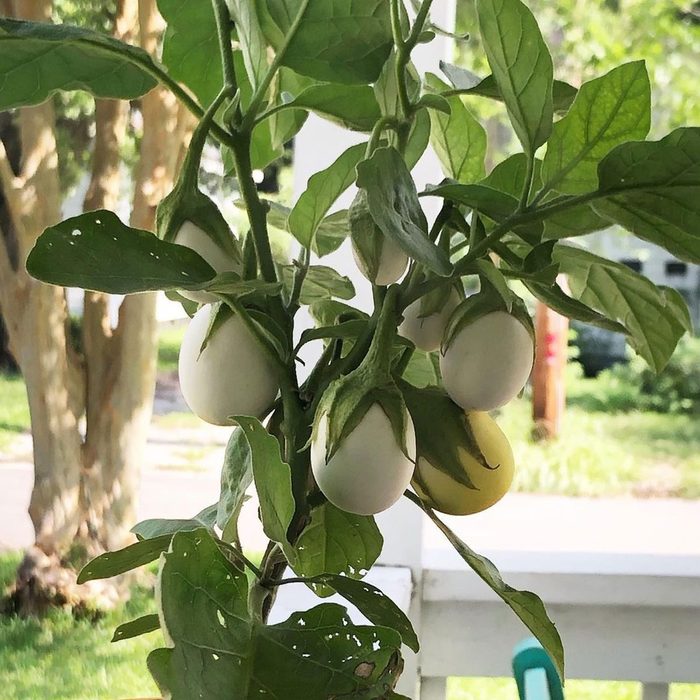Where to Find an “Easter Egg Plant,” the Mini Eggplant That’s Perfect for Spring
Updated: Mar. 23, 2022

The mini "Easter eggplants" are too cute!
Our editors and experts handpick every product we feature. We may earn a commission from your purchases.
When spring rolls around—especially in anticipation of Easter—tulips, daffodils and irises make colorful appearances in and around many homes. You can be sure to find these classic flowers in Easter bouquets near the grocery store checkout. But if you’re looking to add something different (and humorous) to your spring plant lineup, look for an Easter egg plant.
The name is slightly misleading—this plant doesn’t grow eggs for you to pluck come Easter morning. However, it might as well!
Learn more about early-blooming flowers for spring.
What is the Easter Egg Plant?
This Easter egg plant, or Solanum ovigerum, is actually a miniature type of eggplant. It’s not the deep purple color we’re familiar with, but there are still a handful of similarities to the fruit we use in eggplant Parmesan.
View this post on Instagram
For starters, not all types of eggplant are a royal purple hue. Some are bright white, striped or pastel purple. The fruits that grow from the “Easter egg” plant start off white, but ripen to shades of yellow, orange, cream and green, says Park Seed. And, you guessed it, their shape closely resembles that of an actual egg, versus the oblong purple fruit we’re used to picking up in the produce section.
Find out how to decorate adorable flower pot Easter eggs.
Can You Eat the Easter Eggplants?
You can, but you probably don’t want to. The ornamental fruit doesn’t taste much like the eggplant you’re used to cooking with. Stick to traditional globe eggplants when it comes to preparing eggplant recipes. Check out the top 10 herbs to grow for cooking.
Where to Find an Easter Egg Plant
Look on Etsy! You can find a small plant that’s ready for the garden or start with a packet of seeds.
Your best bet is to grow this plant outdoors to meet sunlight and temperature requirements, but you can start seedlings indoors. The growing plant will need about six hours of sunlight each day, meaning that you need to situate it comfortably by a window or under a grow light.
Then, come spring, you can transplant the growing Easter egg plant outdoors, or simply move your pot outside. Look for purple flowers in late spring, and for the egg-like fruits to start growing mid-summer.



















